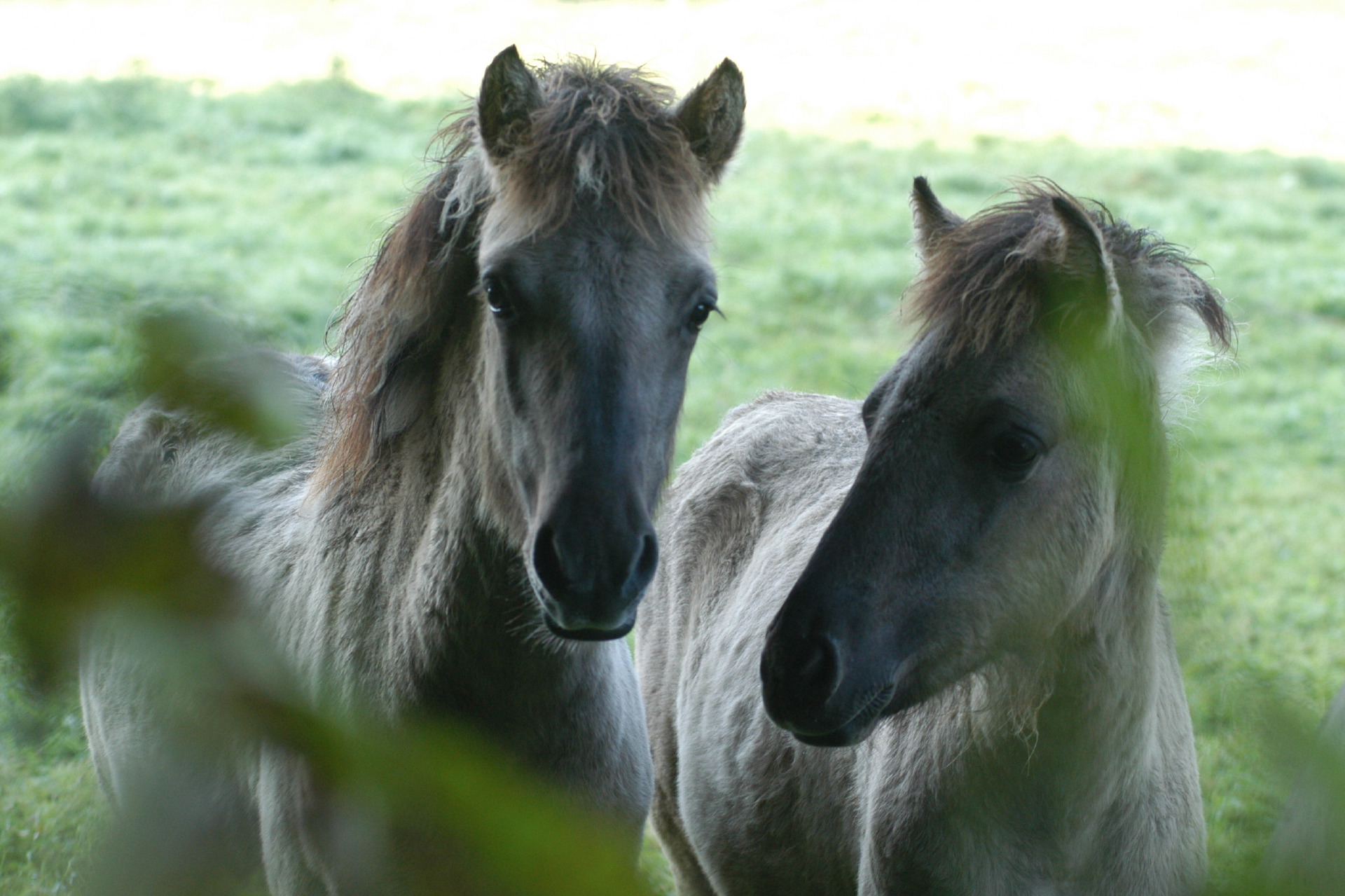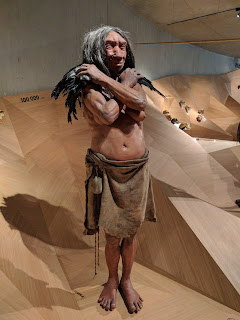I don't think that any of the artifacts in the museum are original, but that doesn't make them uninteresting. They have a variety of skulls and other bones that look like they come from an anthropological dig -- some parts look like bone, with other parts being plaster, or whatever is used for missing pieces when they reconstruct a skull from fragments. But the more interesting exhibits are the reimagined full bodies. Here is a Neandertal woman:
This is Homo erectus (from an earlier time -- the number on the base is approximately when he lived.)
And this is the famous Lucy, the oldest known humanoid fossil. Pretty sassy for such a short person.
This is a neandertal child. While the fossils found in Africa were consistently given dark skin and kinky hair, the neandertal reconstructions had a variety of skin tones, from mid-dark to quite pale, and included models with straight blond hair. I have no idea of research behind those decisions, but it was thought-provoking.
The placards and audio material (available in English) were excellent; I learned a lot about neandertals that I hadn't known, and many myths were dispelled (such as that neandertals were not as intelligent/as advanced in tool making as the homo sapiens that lived at the same time). There was separate material for adults and kids, and a variety of activities for kids to do as they went through the museum (one example: a skeleton is buried in loose sand and the kids can use special brushes to move the sand away and then record findings about this skeleton with measuring instruments and sketching).
We didn't have time to visit it, but there is also a small zoo, where they have "backbred" animals to be more similar to the animals of prehistoric times. There are bison, aurochs (proto-cattle), and tarpan (proto-horses). Here are some tarpan

We also visited a quaint village called Guiten Dorf, with many 16th to 18th century houses. A few pics, the first of a classic half timbered house, now a restaurant:
Another half timbered house, even older. It was originally owned by a doctor.
An old watermill on the River Düssel
It's the opportunity to have outings like this that sometimes makes us think we should rent a car and wander the countryside on some of our weekends. Of course, these places are curated for us by locals, so it's not clear we would do as well on our own.








No comments:
Post a Comment